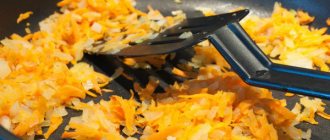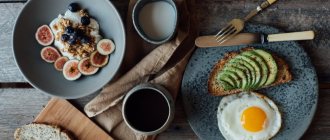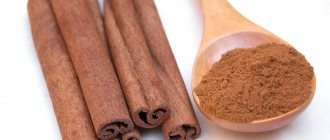Diabetes mellitus is a chronic disease that is accompanied by an increase in blood glucose due to an absolute or relative deficiency of insulin, as a result of which the entire metabolic process in the body suffers and damage to almost all organs and systems progresses. The most important task for a patient with a confirmed diagnosis of diabetes is to follow a special diet, which involves minimizing the consumption of simple, easily digestible carbohydrates, especially glucose, while increasing the amount of complex carbohydrates in the diet.
Many people find it difficult to adapt to a new lifestyle and diet, because there are many dietary restrictions for diabetes. Patients who take a responsible approach to organizing their diet naturally have questions about different food products and the possibility of consuming them for this disease. For example, is pumpkin okay for diabetes? How to cook and in what quantities to eat this sunny vegetable? This article is devoted to precisely such questions.
Features of the lifestyle of diabetics
Proper lifestyle management in general, dietary changes and dosed exercises allow you to take control of blood glucose concentrations, preventing its serious fluctuations - hypo- and hyperglycemia.
Taking into account all the contraindications for type 1 or 2 diabetes, rationally combining medications, insulin injections with food and drink, and rational exercise, you can reduce the risks of serious complications of the disease, including damage to the kidneys, eyes, cardiovascular system, peripheral nerves and feet.
Initially, it may seem that leading a healthy lifestyle with diabetes is difficult, but in reality, the changes have a very positive effect on the condition, it is not difficult to comply with them, and there are not many real prohibitions and contraindications to certain foods, drinks and actions for diabetes.
A rational diet and regular dosed physical activity as part of a healthy lifestyle for diabetes help:
- maintain stable sugar levels;
- control blood pressure, cholesterol and other plasma lipid concentrations within target parameters;
- reduce body weight and maintain it in a healthy range;
- completely prevent or seriously reduce the risks of complications of the disease.
This allows you to lead a normal life, not suffer from poor health, and have more strength and energy.
pumpkin seeds
Pumpkin seeds deserve special attention, the benefits of which lie in the ability to:
- Cleanse the liver and prevent the development of diseases of the hepatobiliary system.
- Absorb and remove excess fluid, which has a beneficial effect on the functioning of the renal apparatus and effectively reduces swelling.
- Eliminate cholesterol deposits (due to the presence of saturated and unsaturated fatty acids).
- Increase testosterone production, fight prostatitis and enhance erectile capabilities in diabetic men.
- Treat helminthiases (infection with parasites).
Regular consumption of pumpkin seeds helps prevent bile stagnation
The seeds contain nonessential and essential amino acids, including the rare element tryptophan, which provides psycho-emotional stability and eliminates dysania (sleep disorder). With atherosclerosis, which occurs in most diabetics, pumpkin seed oil helps.
It contains a large amount of unsaturated fatty acids, which help remove cholesterol build-ups and increase the elasticity of vascular walls. It is recommended to drink the oil one tablespoon per day under monitoring sugar levels. The measurement must be taken before taking it and two hours after.
Nutrition for diabetes
Many are concerned about possible prohibitions and contraindications for consuming certain foods for type 1 or type 2 diabetes. But approaches to nutrition have undergone significant changes over the past 20-30 years, and many of your favorite foods can be eaten, but done less often and in small portions. The basis of nutrition for this pathology is healthy, whole and varied foods containing as few light carbohydrates as possible. The diet is selected individually for each patient, taking into account his preferences and characteristics of the disease.
Among the recommended product groups, certain selection features can be emphasized:
- Non-starchy vegetables - tomatoes, carrots, different varieties of cabbage, peppers, herbs. Starchy vegetables such as peas, potatoes, and corn can be added to the diet in smaller quantities.
- Healthy fruits, even sweet ones, since in addition to sugar they contain fiber, which slows down its absorption.
- Half of the grain diet per day should include whole grains. Processed grains and flour products need to be reduced.
- It is important to consume enough protein - meat, fish, poultry, dairy products.
- The diet should include eggs, nuts, seeds, and legumes.
- Products containing unsaturated fats are beneficial for the cardiovascular system. These are vegetable oils, seeds and nuts, sea fatty fish, avocados. When preparing food, you should avoid frying with butter, lard, margarine, and reduce sour cream and cream to a minimum.
Diabetic menu starring pumpkin
There are many delicious pumpkin-based dishes. Here are the recipes for some of them.
Pumpkin porridge
To prepare the porridge, you need to cut the lids off two small pumpkins, remove all the seeds and bake in the oven for 1 hour at 200° C. Pour boiling water over a handful of dried apricots and 50 g of pitted prunes, rinse, cut into small cubes. Rinse 1/3 cup of millet cereal and boil until tender, add salt. Chop one small carrot and onion and sauté in olive oil. Mix dried fruits and vegetables with the prepared porridge. After this, stuff the pumpkin with porridge and cover with a lid. Eat hot with a teaspoon of butter.
Pumpkin porridge is not only healthy, but also very tasty.
Pumpkin salad
Grate a small celery root, carrots, and 200 g of pumpkin pulp. Finely chop the parsley. Mix all the vegetables with herbs, add salt to taste and season with vegetable oil. You can sprinkle pumpkin seeds on top.
Stuffed pumpkin
Wash 2 small pumpkins, cut off the caps and select the seeds. Cut the pumpkin pulp up to 1 cm thick. Cut 2 medium chicken breasts into large cubes, salt and pepper, add herbs to taste. Cut the pumpkin pulp into the same cubes. Mix the fillet with pumpkin, add a little sour cream. Stuff the pumpkins with this mixture and cover with lids.
Place the stuffed vegetables on a large baking sheet and pour 2 cm of water into it. Bake the pumpkin at a temperature of about 180˚C for an hour so that it becomes soft when pierced with a fork.
Thus, consumption of pumpkin by patients with diabetes mellitus has a beneficial effect on the course of this disease. At the same time, we must not forget about the basic treatment of diabetes and in no case replace it with additional methods of therapy.
Restrictions for diabetes: foods and drinks
There are a number of foods or certain drinks that should be sharply limited in the diet or completely eliminated. These include fatty foods rich in animal, saturated and trans fats. It is also important to reduce foods that contain a lot of salt, sugar (sweets, sweet pastries), soda and boxed juices, sports energy drinks. It is useful to drink plain water instead of sweet drinks, and use sweeteners when drinking coffee or tea. It is worth sharply reducing the amount of alcohol or completely abandoning it - it provokes sharp fluctuations in blood sugar.
Meal schedule
Many people are advised to adhere to a certain diet, eating food at approximately the same time every day. But a more flexible approach to nutrition is also acceptable, depending on the type of diabetes and the medications prescribed to control it. It is important to receive a certain, approximately equal amount of carbohydrate components with each meal. The only thing you can’t do if you have diabetes is fasting for a long time, especially while taking medications or insulin. This threatens the development of hypoglycemia, even coma.
Correctly determined portion sizes are also important to control blood sugar and your weight. You need to discuss the nuances of nutrition with your doctor, use useful smartphone applications that help create a diet for diabetics.
Beneficial properties of orange vegetable
Pumpkin is indispensable for dietary nutrition, since it is a low-calorie vegetable (21.4 kcal). It is rich in microelements such as iron, potassium, magnesium, phosphorus, and vitamins necessary for the human body.
It also contains fiber, nicotinic acid, pectin, beta-carotene, starch, and water. In addition to the pulp, pumpkin seeds, oil and fresh pumpkin juice are eaten. Pumpkin oil is similar in composition to fish oil. If you add it a little to cooked dishes, it will replace animal fats, which should be limited if you have diabetes.
Exercise and activity
It is equally important for patients with diabetes to be physically active. Glucose is the main fuel for muscles; due to regular exercise, it is actively consumed, and its level in plasma is maintained lower. In addition, exercise helps maintain overall health and good mood, strengthens the heart and blood vessels, and helps more actively deliver oxygen to tissues.
Physical activity includes traditional exercise such as swimming or playing football. But there is also household activity - you need to move around the house more or use the stairs instead of the elevator. It all matters.
Some people worry that physical activity will be too strenuous or that it will make diabetes management more difficult. And if hypoglycemia occurs frequently, patients worry that their blood sugar will drop sharply. But activity doesn't always lower your blood sugar—it can also cause it to rise.
There is no one activity that is suitable for everyone with diabetes. It's about finding what works best for a particular patient. It is best to combine different activities because they have different benefits. And doing the same thing will get boring after a while.
For example, swimming can increase your breathing and increase your heart rate. This is good for heart health because it has to work harder to pump blood around the body. And if you have diabetes, it's even more important to keep your heart healthy because diabetics are at greater risk for heart disease and other complications. But even gardening helps build strength and can help the body use insulin better.
Active lifestyle at home
It is useful to vacuum the house and wash the floors, and clean more often. If you need to start at an easier pace, you can try standing during TV commercials. If you can handle it, try standing for the entire commercial break and then walking in place during the commercial. You can gradually add one type of exercise at a time.
Even a small change in your daily routine (like going for a walk) will increase your activity and help you feel better about living with diabetes. Can:
- get off the bus one stop earlier;
- ride a bike;
- walk.
If you have diabetes, it is very important to stay active at work, especially if you have to sit in front of a computer for long periods of time. Useful:
- climbing stairs;
- walking meetings;
- standing while a person is talking on the phone;
- Chair exercises such as bending and raising your arms.
Cooking recipes
The product allows you to prepare delicious and valuable dishes:
- vitamin salads from fresh fruit;
- porridge and soups;
- pumpkin juice and casserole;
- dessert.
Pumpkin drink can be used as a stand-alone drink, or in combination with cucumber and tomato juice. This combination improves mood and has a positive effect on the body. The juice saturates damaged organs with useful substances.
Baked pumpkin
A popular and easy option for preparing the fruit is to cook it in the oven. It is necessary to thoroughly wash and remove rough skin and seeds from the fruit. Then cut into portions, place in a mold and put in the oven. A little before it is completely ready, grease the product with a little butter. If you don’t really like the taste of this dish, you can prepare another dish.
Baked pumpkin with spices
Pumpkin porridge
Pumpkin porridge is a useful culinary masterpiece for diabetes. To prepare it you will need the following products:
- raw fruit – 1 kg;
- skim milk – 1 cup;
- sugar substitute – 1 tbsp. l. instead of 2 tbsp. l. white analogue;
- thickener – 1 cup;
- dried fruits with nuts, allowed for consumption - no more than 10 g;
- cinnamon.
Cooking steps:
- cut the pumpkin into small pieces, boil, drain the water;
- add cereal, low-fat milk, and a sugar substitute to it;
- Cook the whole mass over low heat until tender;
- When serving, decorate the dish with dried fruits, cinnamon, and nuts.
Pumpkin porridge
Pumpkin soup
It is recommended to prepare soup as a first course, which is very useful if you have diabetes. For the recipe you will need:
- 0.5 kg pumpkin;
- a glass of cream;
- 2 cups broth;
- 2 tomatoes;
- bulb;
- clove of garlic.
Grind all recipe ingredients. Chop the tomatoes, onion and garlic into small slices, chop the pumpkin into larger pieces. First place onions, tomatoes and garlic in a sauteing container. Simmer for about 5 minutes, then add pumpkin. Pour the dish with cream and then with broth. Cook the dish in a closed container for about 30 minutes. When the soup is ready, pour it into a blender and puree until it becomes a completely homogeneous paste. If a thick consistency is obtained, add more broth. Salt the dish and pepper is allowed.
Pumpkin soup
How exercise affects blood sugar levels
Physical activity can have different effects on blood sugar levels, depending on what the person with diabetes does. Many people don't want to exercise because it lowers their blood sugar. Not all types of exercise lower blood sugar; some cause it to rise. Therefore, it is important to follow a number of rules.
The best time to exercise is one to three hours after a meal, when blood sugar levels may be higher. If a person takes insulin, it is important to check their blood sugar levels before exercise. If your pre-workout level is below 5.5 g/L, eat a piece of fruit or have a small snack to boost your blood sugar and avoid hypoglycemia. Testing again after 30 minutes will show whether your blood sugar levels are stable. It's also a good idea to check your blood sugar levels after any particularly strenuous workout or activity. If the patient is taking insulin, the risk of hypoglycemia may be greatest 6 to 12 hours after exercise. Experts also warn against exercise if a person's blood sugar levels are too high (more than 13.8 g/L) because exercise can sometimes raise blood sugar levels even higher.
Because of the dangers associated with diabetes, a medical alert bracelet should always be worn indicating that the patient has diabetes and is taking insulin. You should also keep glucose lozenges or tablets with you during your workout in case your blood sugar levels drop sharply.
Soup
Since the ingredients in the following recipe include potatoes, which have a high glycemic index, we suggest preparing one serving of the first course. To do this, you will need to take the following components for 0.5 liters of chicken broth:
- 150 g pumpkin pulp;
- 1 onion;
- 1 carrot;
- 2 medium-sized potatoes;
- 10 g olive oil;
- 25 g rye bread;
- 20 g cheese;
- salt, cilantro and parsley to taste.
While the broth is boiling, cut the vegetables into thin strips and place in the oil heated in a frying pan. Sauté for no more than 15 minutes. Then add them to the boiling broth and bring until cooked. When all the ingredients become soft, the liquid should be poured into a separate container and the vegetables should be chopped in a blender. Afterwards the broth is poured back. Before serving, add rye crackers, grated cheese and herbs.









